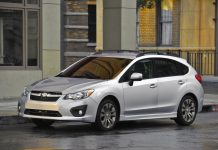Are you looking to purchase a pick up truck? Buying a pick up truck is a bit different then buying other types of vehicles. You have to consider some other factors like bed and cab size. If you are unfamiliar with terms like bed and cab then you may want to learn the basics of pick up trucks before you dig deeper into your pickup truck search. There are so many sizes, styles, and options you need to understand. To best be prepared in your shopping process, here are 7 pickup basics you should know beforehand.
1- Cost
You may think that a truck is not as expensive as a regular car because most of it is trunk space. You are unfortunately wrong. They can get pretty pricey.
For a midsize car you can estimate spending $27,000. This is about a monthly payment of $500. Now for a large size truck you will have to spend $23,000 more. Your cost for a truck will be about $50k. Your monthly payment will be approximately $800.
Because of the hike in price for a truck, you should review your budget. A car for personal use should not be more than 15% of your take home salary a month. You also need to consider the cost of car insurance.
You should also understand added features in a truck a bit better. This will help you understand what you absolutely need in your truck and what you can live without.
2- Bed And Cab Size
What exactly is Bed and Cab size?
Cap size is where you sit. There is a crew-cab where there are four full size doors and lots of leg space for the back seat. There is a double-cab with four doors, but not as much foot space. Extended cabs are slightly smaller in size. The smallest cab size is the regular cab, which has a single row of seats.
A bed size is the trunk of the car. It is where the cargo goes. A midsize truck is about 5 to 6 feet long. A full-size truck is about 5.5, 6.5 and 8 feet. Having a truck with a crew cab and an 8 foot bed is extremely big. So you need to understand the measurements properly.
3- Size
There are lots of sizes for trucks. You should figure out what the primary use of your truck will be. This will help you determine what size truck you need. A midsize truck is great for regular day to day use. It is much easier to navigate on the road and to find parking for. If you are planning on using the trunk for lots of cargo then you should consider a full-size truck. Your cargo and use of the truck will also help you determine if you need a 2 wheel or 4 wheel drive.
4- Light, Medium Or Heavy Duty
You need to first determine what you will be using your truck for. Once you determine this, you can then figure out if you need a light, medium or heavy duty vehicle. You need to determine your need and what the truck can carry properly. If you purchase a truck that is light-duty, but your need is greater you will have trouble hauling the loads you need. On the opposite side, if you purchase a car that is heavy-duty, but your needs are light you will be wasting money. You will have to pay more for the car and more to fill it up with gas. If you need help determining if a car is light, medium, or heavy-duty the manufacturer can help guide you.
5- Fees And Regulations
In certain states, larger trucks require a special license. They may also have extra fees. The heavier the truck you own the more you will pay in special fees. The best thing to do before you purchase a truck is to check with your state’s motor vehicle department. These fees should not stop you from purchasing the truck of your dreams, but if it is unreasonable you may have to reconsider your purchase.
6-Options And Packages
Every make and model of a truck has different trim levels. Each trim level has its own set of features. The best thing to do is to make a list of the features that you absolutely need to have in your truck. This will help you determine which trim level you should get. The color of your car is also an option you need to think about. Being somewhat flexible on some of these details can help you get a better deal.
7- Engine And Axle Ratio
Trucks have a lot of options when it comes to engine size. The capacity and strength of them has also improved. A V6 engine is now able to give the same power as a V8 engine from a decade ago. Modern trucks also have a four-cylinder engine. Some trucks also offer a diesel engine. Diesel engines provide high torque for pulling heavy loads at slow speeds, which is great for towing.
You also need to figure out the axle ratio. The higher your axle ratio, the more you can tow. However, your fuel efficiency will not be that great.









